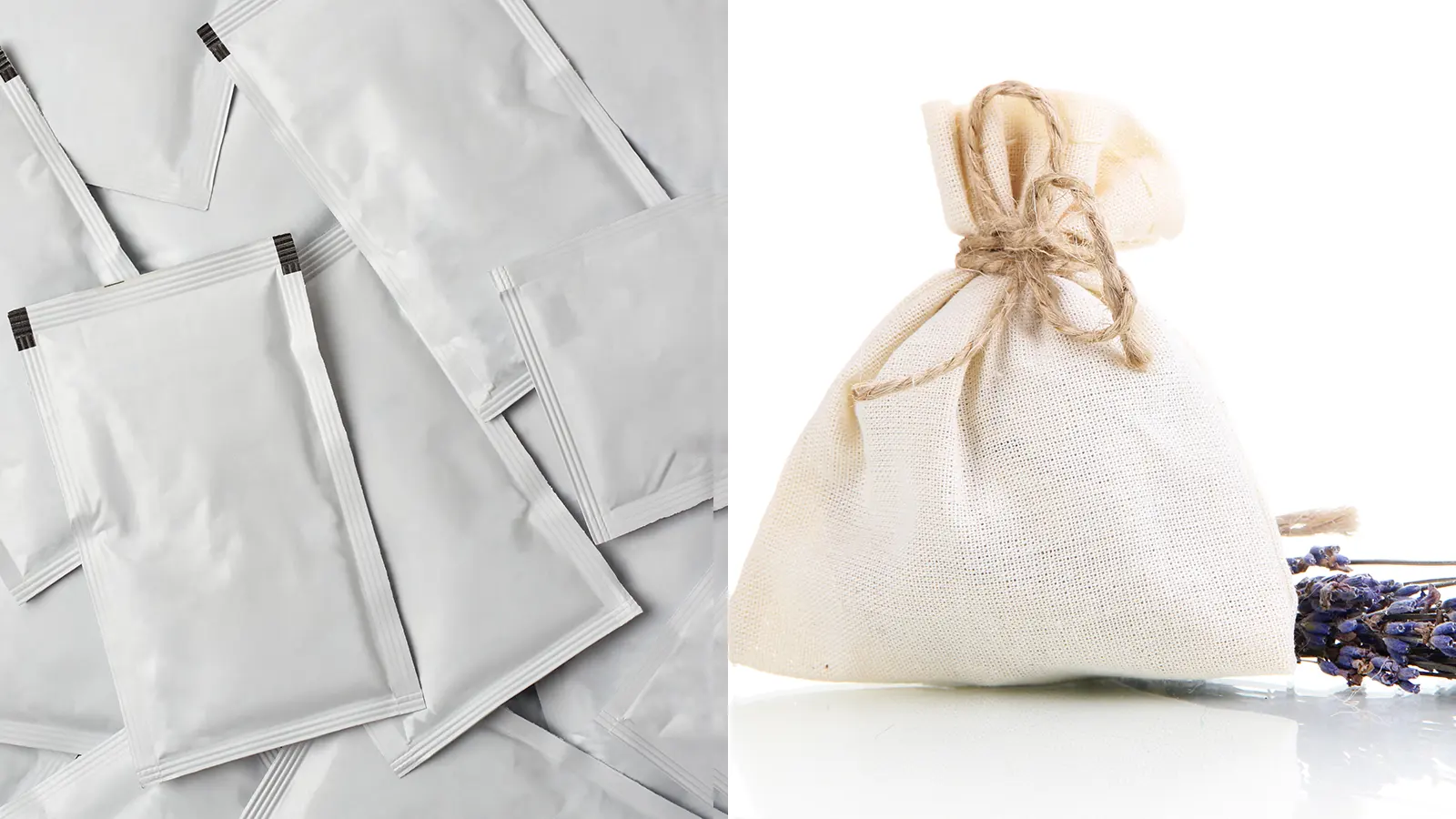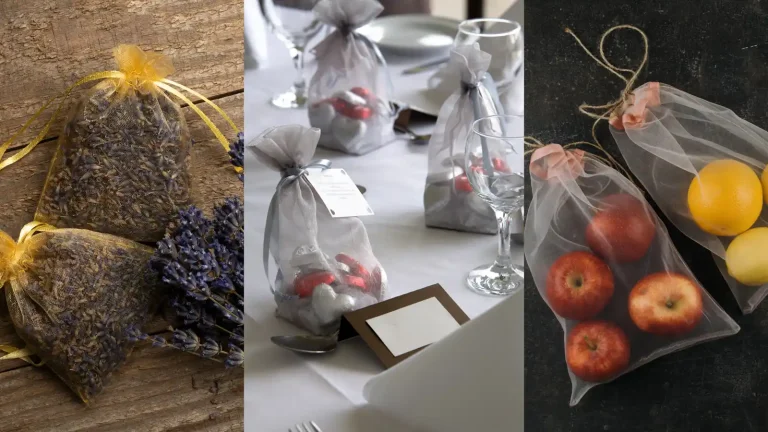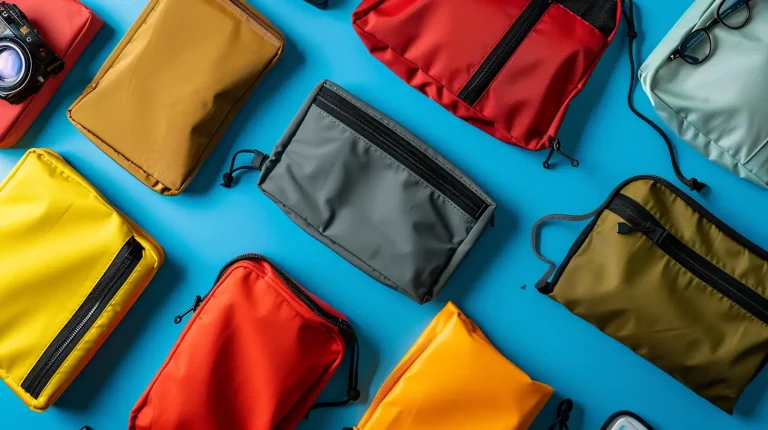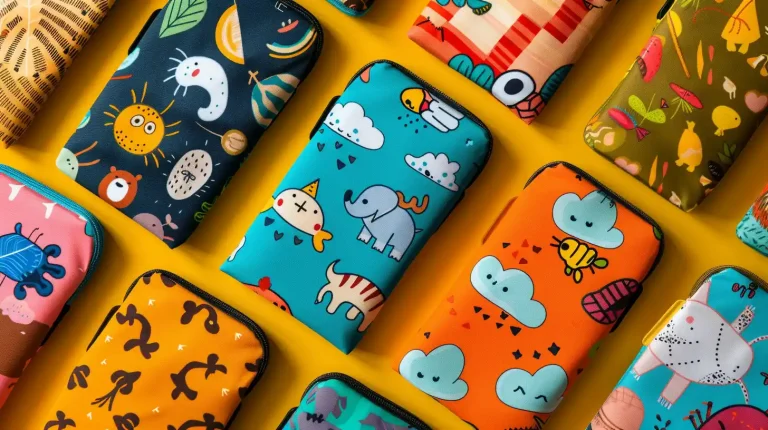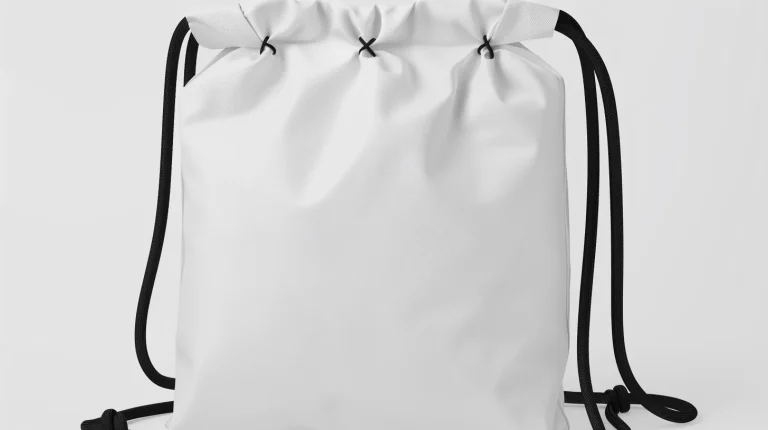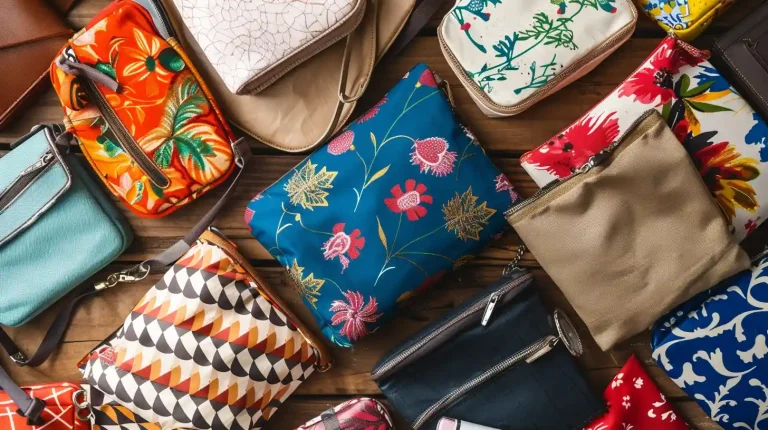When it comes to packaging solutions, the choice between sachets and fabric pouch bags can impact both functionality and environmental footprint. Sachets, usually made from paper, plastic, or foil, are known for their convenience and cost-effectiveness. On the other hand, fabric pouch bags are designed for durability and reusability.
Understanding the features, benefits, and drawbacks of each option can help you make informed decisions tailored to your specific needs.
Understanding Sachets
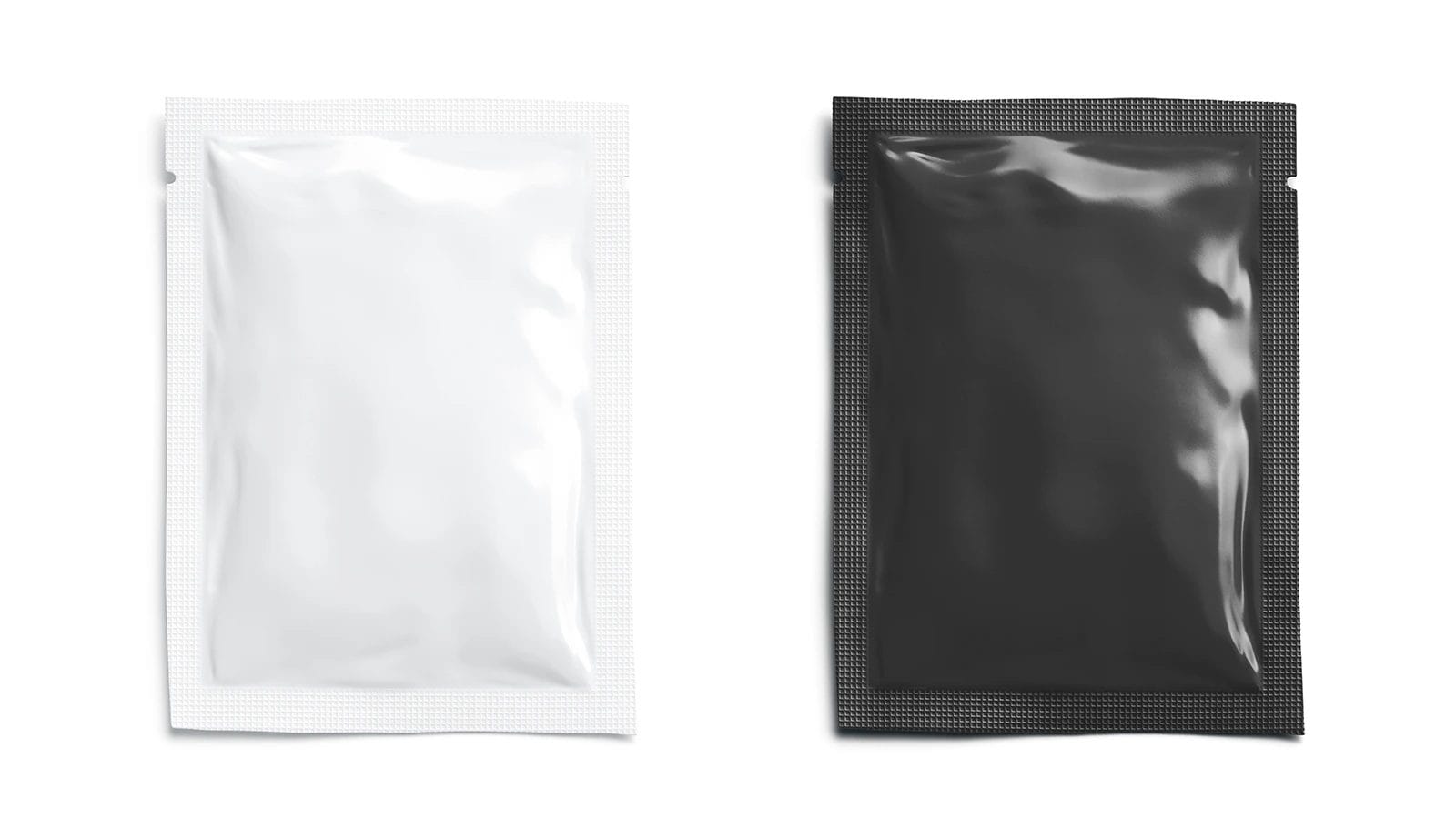
What makes sachets an ideal packaging solution for many products? How do their unique characteristics contribute to their popularity?
As you consider packaging options, sachets stand out for their convenience, portability, and protection. These small, flat packets are perfect for single servings of products like condiments, spices, and hair care items.
Made from thin, flexible materials like plastic or aluminum foil, sachets are cost-effective and ideal for on-the-go consumption or sample packaging. They’re often produced on horizontal form-fill-seal machines for efficient high-volume production.
Sachets offer precise portions and easy portability, making them popular for a wide range of products.
Understanding Fabric Pouch Bags
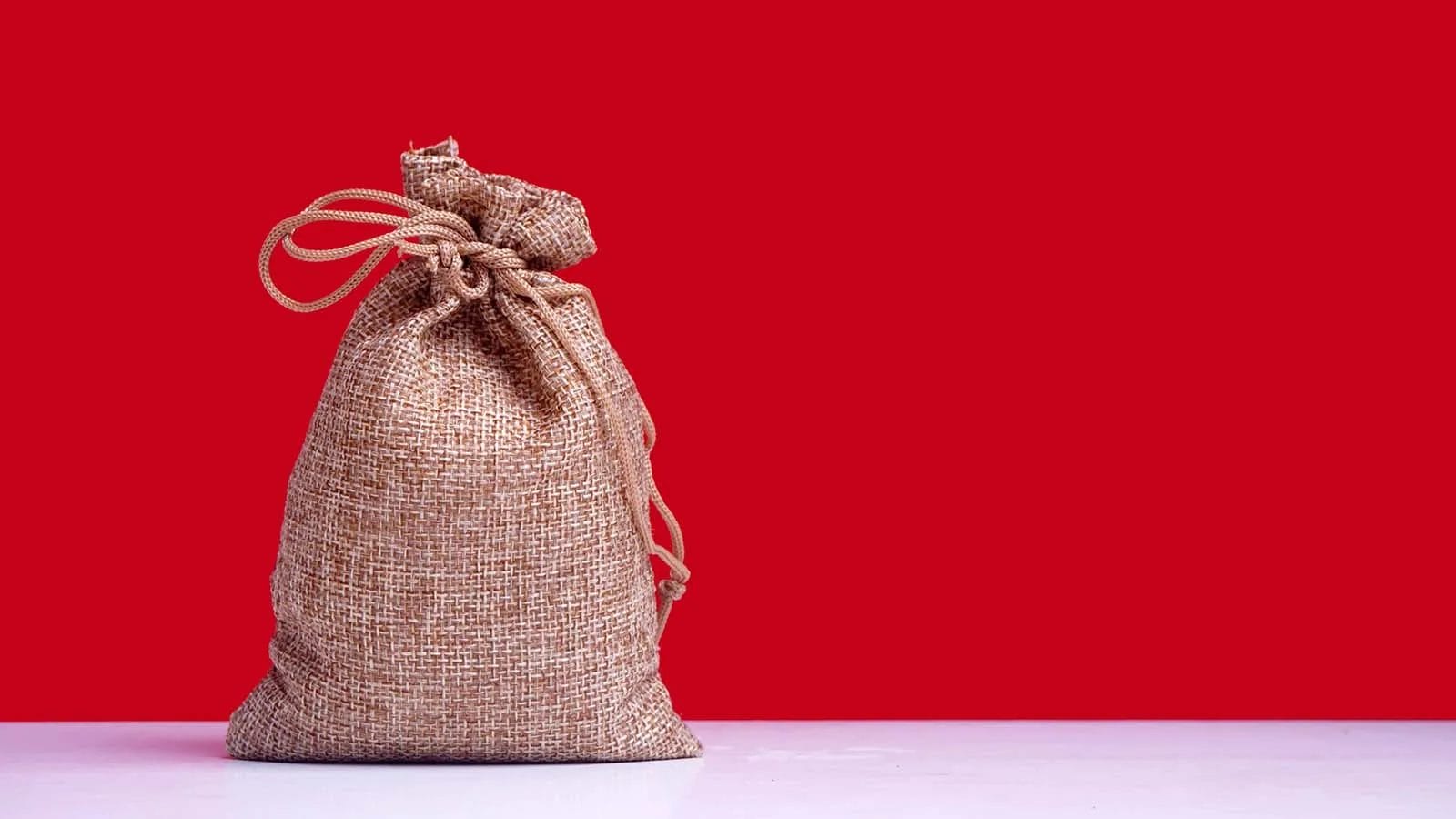
Fabric pouch bags are a versatile and eco-friendly packaging solution for your products. They offer a unique blend of style, durability, and customization options.
These bags are made from woven or non-woven materials, making them durable and reusable. As a sustainable packaging option, fabric pouch bags reduce waste and reduce environmental impact.
You can customize them in various sizes, shapes, and colors to fit your products. They’re ideal for packaging gifts, promotional items, jewelry, and small accessories.
Pros and Cons of Sachets and Fabric Pouch Bags
As you weigh the benefits and drawbacks of sachets and pouches, you’ll find each has strengths and weaknesses.
Sachets
Sachets offers a convenient and cost-effective way to package small quantities of products. They’re an attractive option for companies looking to provide samples or travel-sized portions of their products.
You might’ve received a sachet of condiment with your takeout or tried a cosmetic sample in a small packet. These single-use packets are designed for on-the-go consumption and are ideal for delivering precise portions of products.
As a consumer, you’ll appreciate the ease of storage and portability of sachets. They’re also cost-effective to produce, which is a bonus for companies.
Whether you’re looking to try a new cosmetic or want a travel-sized condiment, sachets have got you covered.
Fabric Pouch Bags
You can opt for fabric pouch bags as a sustainable packaging solution for your products. They offer a unique combination of style, versatility, and eco-friendliness. Unlike sachets, which are typically smaller and less versatile, fabric pouch bags come in a wide variety of sizes, shapes, and designs, making them suitable for a range of products.
As an environmentally friendly option, they’re reusable, washable, and reduce waste. You can customize them with logos, patterns, and colors, serving as a stylish branding opportunity. Despite being lightweight, they’re durable and sturdy. This ensures protection for your products during storage and transportation.
Sachet Vs Pouch: Key Differences Between Them
Now that you’ve grasped the basics of sachets and pouches, it’s time to explore their key differences.
When deciding which option is best, consider factors like material and durability, usage and applications, cost and production, and aesthetics and branding.
Material and Durability
Sachets and fabric pouch bags differ significantly in terms of material and durability. Sachets are often made from lightweight materials like plastic or foil. These materials make them cost-effective for single-use applications but less durable over time. They’re prone to tearing and aren’t suitable for repeated use.
In contrast, fabric pouch bags are crafted from sturdier textiles such as cotton, canvas, or nylon. These materials offer excellent durability. They can withstand wear and tear better, making them a more sustainable option compared to disposable sachets.
Usage and Applications
Sachets and fabric pouch bags both serve as packaging solutions, but they have distinct uses and applications.
Sachets are small, sealed packets usually used for single-use items like condiments, shampoo, or samples of personal care products. They’re designed for convenience and easy disposal.
Fabric pouch bags are reusable and more environmentally friendly. They’re commonly used for items like jewelry, cosmetics, or gift packaging.
Cost and Production
Several factors come into play when comparing the cost and production of sachets and fabric pouch bags.
Sachets are typically less expensive to produce due to their simpler design and use of inexpensive materials. They’re often mass-produced using high-speed machinery, which keeps production costs low.
In contrast, fabric pouch bags tend to be more costly because they involve higher-quality materials and need more labor-intensive processes like cutting, stitching, and sometimes adding drawstrings or zippers. This not only increases production time but also the overall expense.
Aesthetics and Labeling
Sachets and fabric pouch bags offer distinct aesthetics and labeling opportunities. Sachets often feature vibrant colors and high-gloss finishes, making them visually striking on store shelves. They’re designed for single-use convenience and often appeal to cost-conscious consumers.
Fabric pouch bags exude a more premium feel with their tactile materials, such as cotton or linen. These pouches often use minimalist designs and earthy tones, projecting an eco-friendly and reusable image.
Both packaging types serve unique niches and can effectively communicate different brand values and messages.
Environmental Impact
Sachets and fabric pouch bags have different environmental impacts. Sachets, typically made from plastic or mixed materials, contribute to pollution and are challenging to recycle. They often end up in landfills or oceans, harming wildlife.
In contrast, fabric pouch bags, especially those made from organic or recycled materials, can be reused multiple times, reducing waste. Although their production may need more resources initially, their longevity and reusability make them a more sustainable option in the long run.
Conclusion
Considering your product’s unique needs, you’ve weighed the pros and cons of sachets and pouches.
Now, make an informed decision. If single-serve convenience is vital, sachets might be the way to go. But fabric pouch bags are the better fit if you prioritize eco-friendliness, durability, and reusability.
Ultimately, choose the packaging solution that aligns with your brand’s values and target audience’s expectations.
FAQs
What Is a Sachet Package?
It’s a small, flat packet designed for single servings of products like condiments or instant beverages, typically made of thin, flexible materials like plastic or aluminum foil.
Is Sachet a Packet?
You may wonder if a sachet is simply a fancy name for a packet. Well, you’re not alone in thinking that. Technically, the terms are often used interchangeably to refer to small, single-serving packets.
What Is the Difference Between a Stick Pack and a Sachet?
Stick packs are tubular with a side seam, while sachets are flat and sealed on three or four sides, making them ideal for different product types and uses.
What Is a Liquid Sachet?
A liquid sachet is a small, sealed packet that holds liquid products like sauces or personal care items. It’s made from flexible materials for easy handling and on-the-go use.

